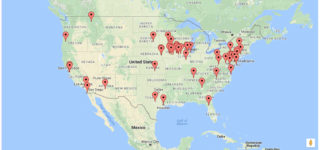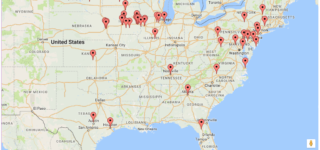As with any type of infrastructure, pipelines are susceptible to failure. They represent an exceptionally high risk because leaks and spills cause an enormous amount of harm to the environment. Additionally, they introduce multiple points of vulnerability from a national security standpoint. Due to these risks, people are concerned about expanding on our existing pipeline grid.
Those protesting the Dakota Access pipeline were reassured that pipeline technology is completely safe and that there was very little risk of a spill because with spill detection systems, valves could be closed in minutes.
Then on December 5, a landowner discovered a spill on their property which was about 150 miles from the Dakota Access protest site. More than 176,000 gallons of crude oil leaked from the Belle Fourche Pipeline into the Ash Coulee Creek. The incident underscored the fragility and risks of pipeline systems. (Source: CNBC, Tom DiChristopher, 12 December 2016)
Yesterday, in northern Iowa, the Des Moines Register reported that a pipeline failure resulted in a spill of 138,600 gallons. The story was covered by other news agencies including the Guardian:
More than 7 million gallons of oil were spilled in more than 1,000 pipeline leaks between 2010 and 2015, according to an analysis by High Country News.
“This really speaks to the central problem, which is that we’re not even surprised that this company spilled something out of a pipeline because it’s inevitable,” Coleman said. “That’s what’s really frightening about these larger pipelines.”
“You can never really rehabilitate an area that got soaked in gasoline. Even this spill, it can’t be cleaned up,” Coleman added. “That gives you some idea of what will happen when the Dakota Access pipeline or the Keystone XL pipeline fails. It’s irreversible.”
The Cause of Pipeline Spills
Often when we hear about spills like those mentioned above, officials will state that the cause of the failure is unknown. Sometimes these failures are the result of cutting corners to maximize profits, or just not following safety regulations.
After the Exxon Valdez oil spill, Greenpeace issued a statement about the cause of the spill with an advertisement that simply stated regarding the captain of the ship:
“It wasn’t his driving that caused the oil spill, it was yours.”
As a society, our ongoing demand for gasoline and petroleum-based products is what makes it possible for oil companies to continue. The Greenpeace campaign emphasized the need for a shift away from fossil fuel dependency.
It’s important to protest these spills as a way of raising awareness about the need for our nation to shift to renewable energy sources and invest more in public transportation and walkable communities. In this regard, driving a car and protesting an oil spill isn’t really a contradiction or hypocritical. It’s a way of saying:
“There’s a problem. Yes, I know I’m part of the problem, but let’s demand that our government and business leaders make the necessary shift to move us toward nondestructive renewable energy sources.”
What We Can Do
The point made by Greenpeace back in 1989 still holds true today. In addition to inspiring change at the top, we can be self-examining and look for ways to create less demand for petroleum-based products. Here are some great ways to begin reducing fossil fuel use.
Page Visitors
Thanks for taking time to read this article and share it with others. The maps below show recent page visitors. Click any image for a larger gallery view.




